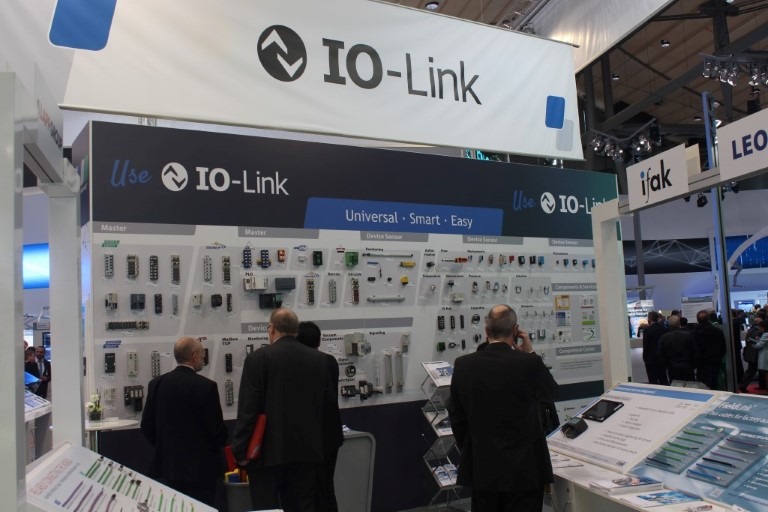IO-Link had some big news at the fair, but first let’s look at some of the IO-Link products. First, the IO-Link wall at the PI booth with more products than ever before.
One of those products was an AS-interface master for IO-Link. Ok, there are masters for every other bus you can imagine, but, really, AS-i? In asking around the explanation was very simple – AS-i is a bus and IO-Link is point-to-point. So if you have AS-i and need IO-Link, you can bring back IO-Link data over AS-i.
Other discussions centered on IO-Link benefits. I asked several people: “Which is more important, IO-Link’s ability to parameterize (configure) or to read back diagnostic information?” I’m a huge believer in getting diagnostic information to prevent and minimize downtime. But most answered to configure. The ability to replace an IO-Link device and have it get its parameters without manual intervention is a real benefit for maintenance folks. At least one person told me it was neither uploading nor downloading that really benefits some users; it was sending analog data digitized. In short, there are many reasons to use IO-Link. Follow our “IO-Link: Did You Know” series in PROFINEWS for more.
In fitting with the Industrie 4.0 and IIoT theme, someone pointed out that IO-Link is the connection to devices after the last meter of cable. And PROFINET has an IO-Link proxy to bring IO-Link communication to Ethernet.
As usual, I networked with PI North America member Comtrol. They are the North American competence center for IO-Link. The biggest promoter of IO-Link in North America seems to be Balluff. A visit to their booth confirmed that. When I asked who was in the booth from the US, Jessica Ross was right there. (She’s our contact for Balluff exhibiting at our PROFINET one-day training classes.)
- Balluff is big in IO-Link
- New PROFINET proxy for IO-Link
- IO-Link and PROFINET – better together
The big news? Through last year, 2,190,000 nodes of IO-Link were installed according to an independent auditor.
Next post: the lighter side.
–Carl Henning




